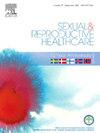通往公平之路:对瑞典堕胎政策和服务的证据和做法的范围审查
IF 1.7
3区 医学
Q3 PUBLIC, ENVIRONMENTAL & OCCUPATIONAL HEALTH
引用次数: 0
摘要
本研究的目的是1)绘制和综合瑞典堕胎政策和服务提供和交付发展的科学证据,2)确定全国公平堕胎服务的潜在促进因素和障碍。方法对1975-2024年发表的同行评议论文(51篇)和灰色文献(23篇)进行范围综述。遵循PRISMA-ScR方案进行范围审查。纳入74份(n = 74)文献,采用定性综合方法总结、分析和评估鉴定的证据体。结果发现临床指南存在差异,表明服务提供不一致。虽然有强有力的证据支持助产士在提供药物流产方面的作用,但这一作用尚未得到充分实施,而且各区域之间和各区域内部也存在差异。瑞典堕胎法禁止助产士成为药物流产和自我管理的家庭流产的主要提供者,从而阻碍了获取。差距分析显示,尽管堕胎服务已经得到了很好的研究,但移民的经历几乎没有得到解决,LGBTQI +人群和残疾人的经历则缺席。结论通过立法发展、医疗创新和扩大助产士主导的药物流产服务,在促进获得公平堕胎服务方面取得了重大进展。然而,仍然存在一些障碍,包括服务提供的可变性,并且从交叉角度来看存在研究差距。为了更好地为政策和实践提供信息,未来的研究可以应用生殖正义的视角来探索种族、性别、残疾和性是如何交叉的,以及如何影响堕胎服务的获取和体验。本文章由计算机程序翻译,如有差异,请以英文原文为准。
The road to equity: A scoping review of the evidence and practices on abortion policies and services in Sweden
Objective
The aims of this study are to i) map and synthesize scientific evidence on abortion policies and service provision and delivery developments in Sweden and ii) identify potential facilitators and barriers to equitable abortion services nationally.
Methods
A scoping review of peer-reviewed papers (n = 51) and grey literature (n = 23) published 1975–2024 was conducted. The PRISMA-ScR protocol for scoping reviews was followed. Seventy-four (n = 74) documents were included, and a qualitative synthesis was used to summarize, analyze, and assess the body of evidence identified.
Results
Divergence in clinical guidelines was found and indicates inconsistencies in service delivery. Although there is strong evidence supporting midwife’s role in delivering medication abortion, it has not been fully implemented and differs between and within regions. The Swedish abortion legislation prevents the implementation of midwives being key providers of medication abortion and self-managed home abortions in whole, thereby hampering access. The gap analysis show that although abortion services have been well researched, the experiences of migrants are scarcely addressed, and those of LGBTQI + people and persons with disabilities are absent.
Conclusion
Significant progress has been made in advancing access to equitable abortion services through legislative developments, medical innovations and the expansion of midwifery-led medication abortion services. However, some barriers remain including variability in service delivery and there is a research gap from an intersectional perspective. To better inform policy and practice, future research could apply a reproductive justice lens to explore how ethnicity, gender, disability and sexuality intersect and shape access to and experience of abortion services.
求助全文
通过发布文献求助,成功后即可免费获取论文全文。
去求助
来源期刊

Sexual & Reproductive Healthcare
PUBLIC, ENVIRONMENTAL & OCCUPATIONAL HEALTH-
CiteScore
2.70
自引率
5.60%
发文量
73
审稿时长
45 days
 求助内容:
求助内容: 应助结果提醒方式:
应助结果提醒方式:


